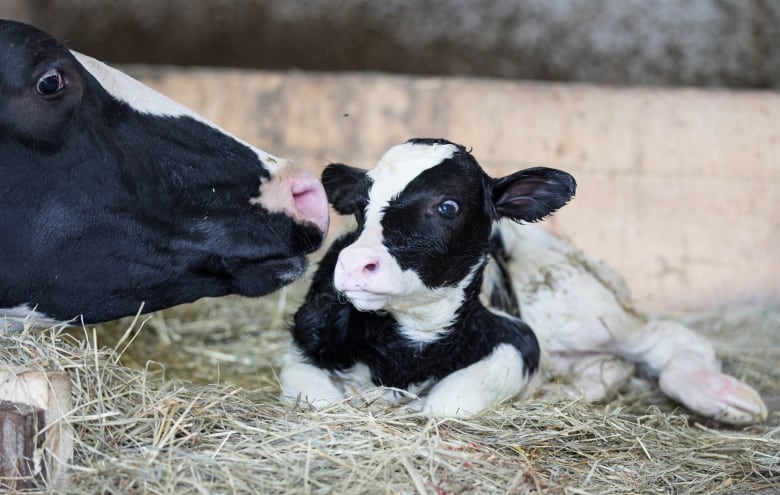What We Know About The New USMCA Trade Deal

Unrestricted trade. It’s written into the title of the North American Free Trade Agreement. But as details of the newly renegotiated deal (the United States-Mexico-Canada Agreement or USMCA) emerge, questions remain about what Canada’s signature guarantees in terms of protections, and what concessions were made. As the smoke of heated NAFTA talks clears, here’s a look at what will be included in a trade deal between the three countries — and what that could mean for Canadians
by Elise von Scheel – CBC News
Access to Canada’s dairy market soured Trump even before NAFTA renegotiations began, as the U.S. has long dealt with chronic overproduction of milk products.
It was one of the final sticking points as talks dragged long into the night on Sunday.
The new deal gives American farmers greater access to Canada’s dairy industry. It’s unclear exactly how much will be given, but U.S. administration officials say it’s above the 3.25 per cent set out in the Comprehensive and Progressive Agreement for Trans-Pacific Partnership.
“We are close, but not there yet”
Canadian dairy is heavily protected by a system of supply management and the U.S. faced tariffs of up to 300 per cent on any exports that exceeded established quotas.
Those tariffs were a particular irritant for Trump, who demanded the dismantling of the supply management system after the G7 summit in Quebec this summer.
Prime Minister Justin Trudeau stood by the existing procedures.
“We will defend supply management, as I’ve said, but is there room for flexibility? We’ll see, and that depends on the kinds of negotiations we have,” he said in September.
The way the government protects Canadian farmers was also an issue during negotiations with the European Union.
As part of the The Comprehensive Economic and Trade Agreement (CETA), which has yet to be fully ratified, Canada agreed to nearly double the amount of duty-free cheese imports — the first time it had awarded a new cheese quota since the 1970s.
National security was the catalyst of the all-out tariff battle this summer, and it looks like that could continue.
Canada was scrambling to secure an exemption from steel and aluminum tariffs, but it became clear the Trump administration wasn’t budging easily.
“There isn’t any agreement on that at this point. There’s been talk about potential discussions there but that’s on a completely separate track,” a senior U.S. official told reporters Sunday night.
A source with knowledge of the negotiations said Canada hopes the duties will be gone by the time a deal is signed.
Initially Canadian officials were treating the Section 232 duties — the part of the Trade Expansion Act which allow the U.S. administration to charge import fees on grounds of national security without consulting Congress — as a separate issue from the NAFTA talks. As time went on, it became clear that wasn’t a sustainable strategy.
During the summer, Trump’s announcement that Canada would be subject to tariffs on steel and aluminum drew gasps from the halls of Parliament Hill. Canada quickly punched back with equal $16.6 billion-dollar counter tariffs on a plethora of carefully chosen U.S. products, including bourbon, household appliances, playing cards and sailboats.
Foreign Affairs Minister Chrystia Freeland repeatedly said the tariffs were “illegal,” but Trump remained unfazed. So much so that a former senior economist with the Bush administration said it indicated the president was seeing how far Canada could be pushed.
Canada was unwavering in its demand for Chapter 19. Why? According to the prime minister, it’s because Trump “doesn’t always follow the rules.”
Chapter 19, the section of NAFTA that allows companies to request arbitration if they feel their products have been unfairly hit with anti-dumping or countervailing duties, was personally detested by U.S. negotiator Robert Lighthizer.
In the end, Canada claimed that win.
“There hasn’t been any significant changes with respect to those chapters,” the U.S. official explained.
That particular red line for Canada has a history rooted in lumber exports.
In the early 2000s, lumber exporters took their case to a NAFTA panel, and won.
However, the U.S. didn’t want to comply with the ruling and Canada eventually negotiated a settlement that didn’t refund all the industry’s money.
When that brokered peace expired, the U.S. industry demanded another investigation and the country’s Commerce Department levied additional duties, reigniting the dispute.
Concerned about a repeat, Trudeau was unequivocal about its inclusion in a new pact.
“We need to keep the Chapter 19 dispute resolution because that ensures that the rules are actually followed,” he said at the beginning of September.
Chapter 19 has historically been a minefield for the two countries. It was developed as part of Canada’s first trade deal with the U.S., negotiated back in the 1980s under Prime Minister Brian Mulroney.
One of its architects, former Canadian negotiator Gordon Ritchie, recalls holding secret meetings with James Baker, the U.S. secretary of state at the time, after Mulroney refused to take a call from President Ronald Reagan until the Americans relented.
“OK, you can have your damn dispute settlement proposal,” Ritchie recounts Baker saying.
One headline item you’re unlikely to see in the text of the new agreement is the controversial sunset clause — at least in its originally pitched format.
“None of the things we put on the table was as challenging as [an] American sunset clause that said after five years this thing goes away unless all three parties agree,” David MacNaughton, Canada’s ambassador to the U.S., told Politico.
In the bilateral deal intended for Mexico and the U.S., that five-year expiry was lengthened to a 16-year term, renewable following a six-year review.
Reuters












